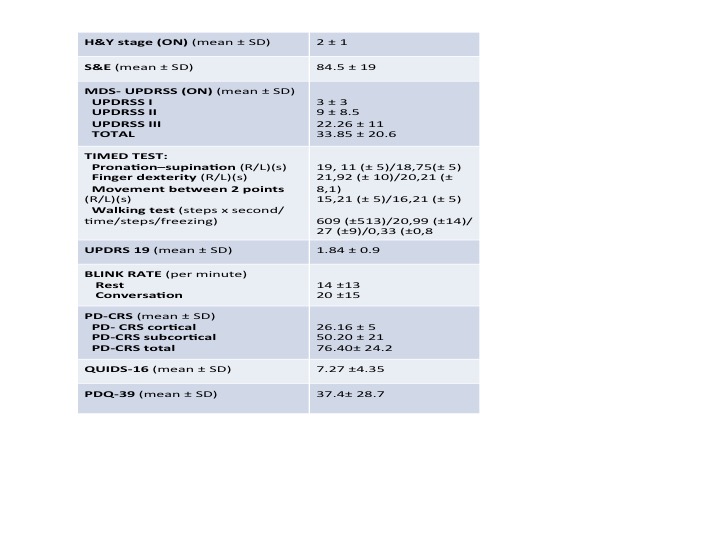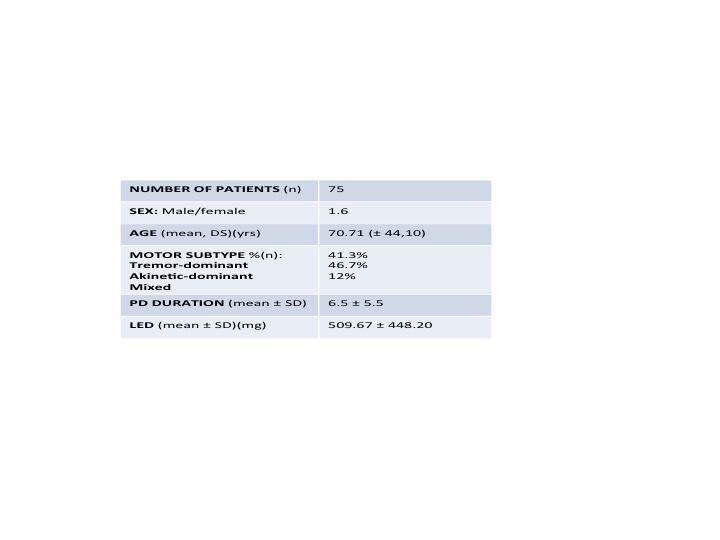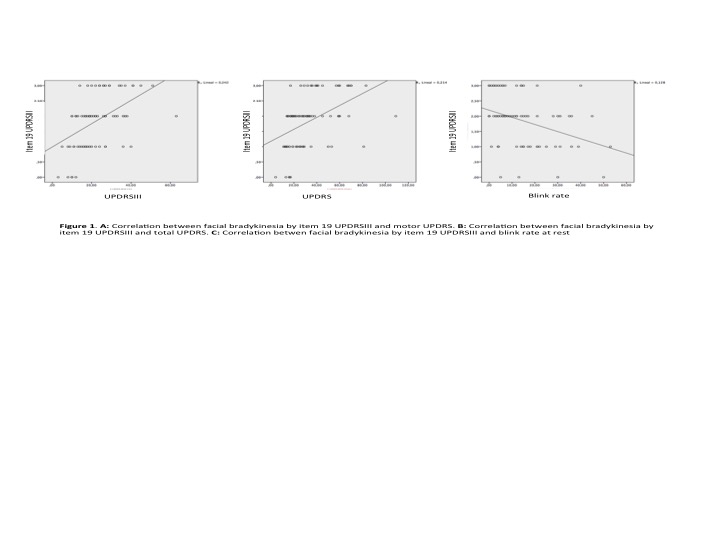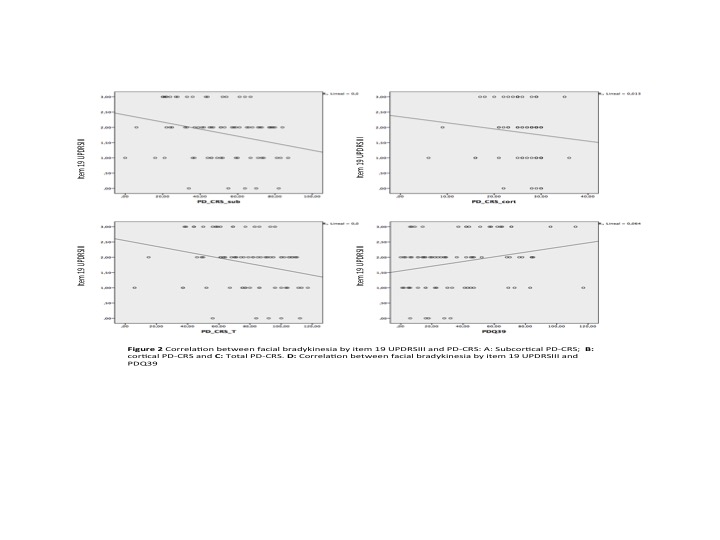Session Information
Date: Tuesday, September 24, 2019
Session Title: Parkinsonisms and Parkinson-Plus
Session Time: 1:45pm-3:15pm
Location: Agora 3 West, Level 3
Objective: To asses the correlation of amimia (facial bradykinesia) with motor and non-motor symptoms (cognition and depression) in Parkinson´s disease (PD) patients.
Background: Reduced facial expression, amimia or facial bradykinesia is one of the most typical features of PD. Despite being described in classic texts, its significance, physiopathology and correlation with motor and non-motor symptoms, including depression and cognitive impairment, is largely unknown.
Method: We studied facial bradykinesia in a group of 75 PD [table1-2]. Clinical assessment was performed with the (on) Unified Parkinson´s Disease Rating Scale (UPDRS), timed tests and Hohen-Yahr scale. Cognitive study was assessed by Parkinson Disease Cognitive Rating Scale (PD- CRS), depression by the 16-Item Quick Inventory of Depressive Symptomatology (QIDS-SR16) and quality of life by the PDQ-39. Facial bradykinesia was studied according to item 19 of UPDRSIII and to blink frequency in a rest situation and during spontaneous conversation [figure1].
Results: Facial bradykinesia (item 19 UPDRS III) statistically correlated with total and motor UPDRS(r:0.55 and 0.52 Spearman respectively) [figure1], Hoehn-Yahr scale (r:0.3865), timed tests, gait freezing, cognitive status (r:0.29) and quality of life (r:0.25)[firure2]. Blink frecuency only correlated with facial bradykinesia by UPDRS, motor and total UPDRS.
Conclusion: In our study, facial bradykinesia correlated with PD severity (Hoehn-Yard scale), motor (UPDRS, UPDRSS III, timed test) and cognitive scores (PD-CRS) and quality of life.Our data suggest that facial bradykinesia might be a general indicator of PD severity and cognitive status in PD. Blink rate could be an useful extra tool to measure facial bradykinesia but with a poor relationship with non motor signs.
References: • Bologna M, FabbriniG, Marsili L, Defazio G, Thomson PD, Berardelli A. J. Facial bradykinesia. Neurol Neurosurg Psychiatry. 2013; 84:681-5 • Marsili L, Agostino R, Bologna M, Belvisi D, Palma A, FabbriniG, Berardelli A. J. Bradykinesia of posed smiling and voluntary movement of the lower face in Parkinson’s disease. Parkinsonism Relat Disord. 2014; 2:370-5 • Katsikitis M, Pilowsky I. A controlled quantitative study of facial expression in Parkinson’s Disease and depression. J Nerv Ment Dis. 1991; 179:683-8
To cite this abstract in AMA style:
T. Maycas-Cepeda, C. Feliz-Feliz, L. Gomez-Vicente, R. García-Cobos, P. Lopez-Ruiz, R. Arroyo, PJ. García- Ruiz. Amimia in Parkinson’s Disease and its Relationship with Motor and Non-Motor Symptoms [abstract]. Mov Disord. 2019; 34 (suppl 2). https://www.mdsabstracts.org/abstract/amimia-in-parkinsons-disease-and-its-relationship-with-motor-and-non-motor-symptoms/. Accessed April 26, 2025.« Back to 2019 International Congress
MDS Abstracts - https://www.mdsabstracts.org/abstract/amimia-in-parkinsons-disease-and-its-relationship-with-motor-and-non-motor-symptoms/




